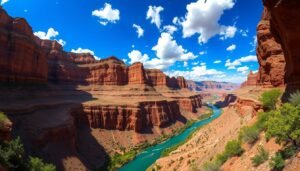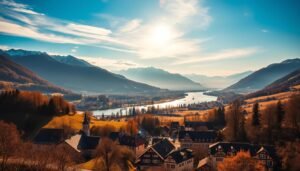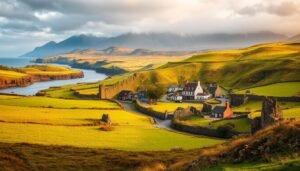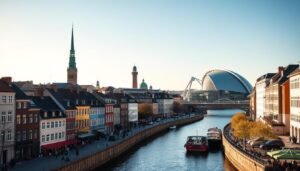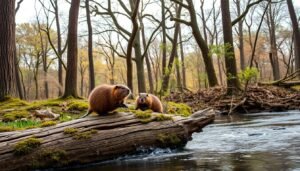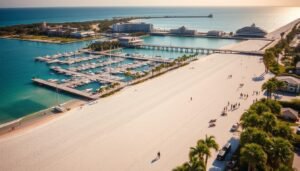France drew nearly 89 million visitors last year, a figure that shows how powerful its art, food, and landscapes are across the world.
I wrote this guide as a curated list that blends iconic cities and quieter gems I return to year after year.
I’ll explain how to structure trips by region, when a train beats a rental car, and how to pick a great base town to cut transit time.
Expect a mix of museum mornings in Paris, wine afternoons in Bordeaux and Burgundy, coastal views on the Riviera, and slow days in the Loire and Dordogne.
I’ll also note seasonal tips — lavender in Provence, Christmas markets in Alsace, and the best times for Normandy’s shoreline.
Read on for a practical, travel-tested post that helps you plan focused trips or longer road journeys across each memorable region.
Key Takeaways
- France offers a rich mix of art, food, wine, and history worth planning around.
- Choose trains for cities and a car for rural or multi-region routes.
- Pick strategic base towns to save travel time between sights.
- Time your visit for seasons like lavender or Christmas markets.
- This post blends iconic highlights with lesser-known gems I return to often.
How I Picked This List of Must-See Places in France

I chose this guide from years of routes I’ve driven, trains I’ve taken, and day plans that didn’t feel rushed.
Selection criteria focused on variety across region types, geographic spread, and clear travel logistics. I weigh art, food, wine, history, scenery, and ease of access so each stop works for a first-time visit to the sites.
My pacing method maps how many day trips to fold into a stay and when a central base keeps travel time low. I also note when a place needs two or three days—Normandy, for example, rewards slow exploration with bases in Honfleur or Bayeux and a night near Mont Saint-Michel.
I time visits for early mornings or late afternoons to avoid crowds. For long hops I favor trains, then rent a car locally for countryside loops. Practical notes like the Crit’Air sticker and the Eurostar option to Lille help avoid surprises.
| Criterion | Why it matters | Applied example |
|---|---|---|
| Access | Saves transit time | Train to Paris, car for Dordogne |
| Experience mix | Balanced art, food, scenery | Paris + Provence + Loire |
| Pacing | Keeps days relaxed | 3–4 day stays in Normandy |
This working framework is a quick post you can bookmark while planning trips across each region.
Paris and Île-de-France: Iconic Art, Architecture, and Easy Day Trips

Paris is a city I return to for its neighborhoods, cafés, and museum rhythm. I often base myself on the Left Bank or in Montparnasse because those areas make Paris feel like home quickly. The streets are walkable, metros are nearby, and mornings are perfect for café life.best-time-to-visit-switzerland
Neighborhoods I love for a first stay
I pick the Left Bank or Montparnasse for easy access and a calm evening vibe. Small bakeries, quiet lanes, and friendly cafés make it simple to settle in.
Unmissable art stops
My art plan pairs Musée d’Orsay and L’Orangerie in one afternoon for late-19th-century masters and Monet’s water lilies. I add Musée Cluny for medieval tapestries and a different pace.
Day trips that wow
A single day at Versailles needs timed entry and a block of time for the gardens; it’s also a noted world heritage experience. Giverny offers Monet’s gardens for a softer, floral contrast. Fontainebleau gives château interiors and forest walks that calm a busy city rhythm.
| Site | Highlight | Why I recommend |
|---|---|---|
| Versailles | Hall of Mirrors, gardens | Plan timed tickets; grand scale and heritage value |
| Giverny | Monet’s gardens | Perfect for a relaxed, colorful afternoon |
| Fontainebleau | Château and forest | Mix of ornate rooms and easy countryside walks |
| Seine / Canal trip | Short cruise | Nice way to return to the town at dusk |
I recommend planning two to three day trips while keeping evenings for café-hopping and quiet strolls. Paris rewards repeat visits; each trip reveals more places visit across the region.
Normandy in Northern France: History, Harbors, and Cliffside Views
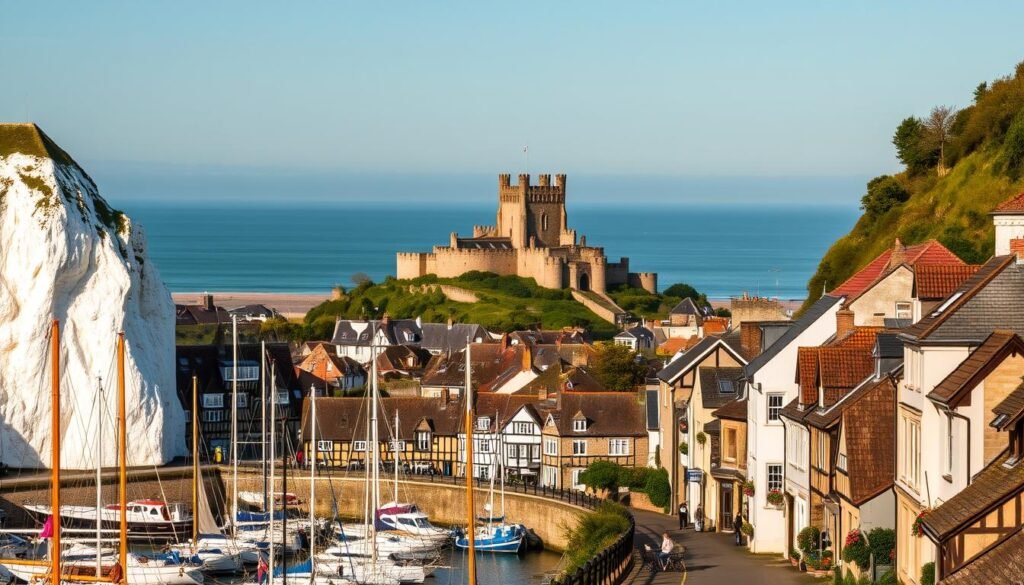
I plan three to four days here to balance wartime history with coastal calm and painterly harbor towns. Start in Courseulles-sur-Mer at the Juno Beach Centre and spend time at the Caen Memorial to ground your understanding of D‑Day.
WWII museums and narrated sites
After Caen, head to Bayeux for the remarkable tapestry and smart displays that bring medieval and modern stories together. Museum-heavy mornings pair well with slow harbor lunches and quiet afternoons.
Harbor charm and dramatic cliffs
Base yourself in Honfleur or Bayeux. From there, give a full day to Étretat’s chalk cliffs for sweeping views and cliffside walks that look like a painting.best-time-to-visit-thailand
Mont Saint-Michel and nearby stays
I time Mont Saint-Michel for late afternoon and sunset. Staying overnight nearby smooths parking issues and turns a frantic day trip into a magical evening visit.
- Start with Juno Beach and Caen, then Bayeux tapestry tour.
- Pick a town base and carve an Étretat day for light and photos.
- Add a Rouen detour for its cathedral and Joan of Arc sites; Giverny fits if you loop back toward Paris.
| Day | Focus | Tip |
|---|---|---|
| 1 | Juno Beach, Caen | Start early; guided tours add depth |
| 2 | Bayeux, tapestry | Museum morning, harbor lunch |
| 3 | Étretat cliffs, Honfleur | Time walks for late light |
| 4 | Mont Saint-Michel | Stay nearby for sunset and easy parking |
Brittany’s Rugged Coastlines, Ancient Sites, and Storybook Towns

I find Brittany rewarding for its dramatic tides, pink-granite coves, and small galleries that feel like home when you step off the main train line.
Saint-Malo ramparts, tidal drama, and coastal walks
I walk Saint-Malo’s ramparts at low and high tide. The changing water reshapes views, so plan a day around tide times for the best light.
Côte de Granit Rose and surreal rockscapes near Trégastel
The pink-granite coast near Trégastel feels otherworldly. Short walks thread giant boulders and quiet coves that soothe a city-worn pace.
Carnac’s prehistoric standing stones and why they’re worth a detour
Spend a morning among Carnac’s alignments and visit the small museum. Balance the visit with a lazy seaside afternoon and a crêpe stop.
- I like a one-week loop: nights around Saint-Malo, Trégastel, then Carnac.
- Don’t miss Huelgoat’s forest boulders and Pont-Aven’s art galleries for a touch of local history.
- A car makes countryside roads and coastal drives simple, letting you chase weather and great light for photos.
| Focus | Why go | Timing |
|---|---|---|
| Saint-Malo | Ramparts and tides | 1–2 nights |
| Trégastel | Granite coast walks | 2 nights |
| Carnac | Megalithic sites + museum | 1–2 nights |
Loire Valley: Châteaux, Vineyards, and Slow-Country Living
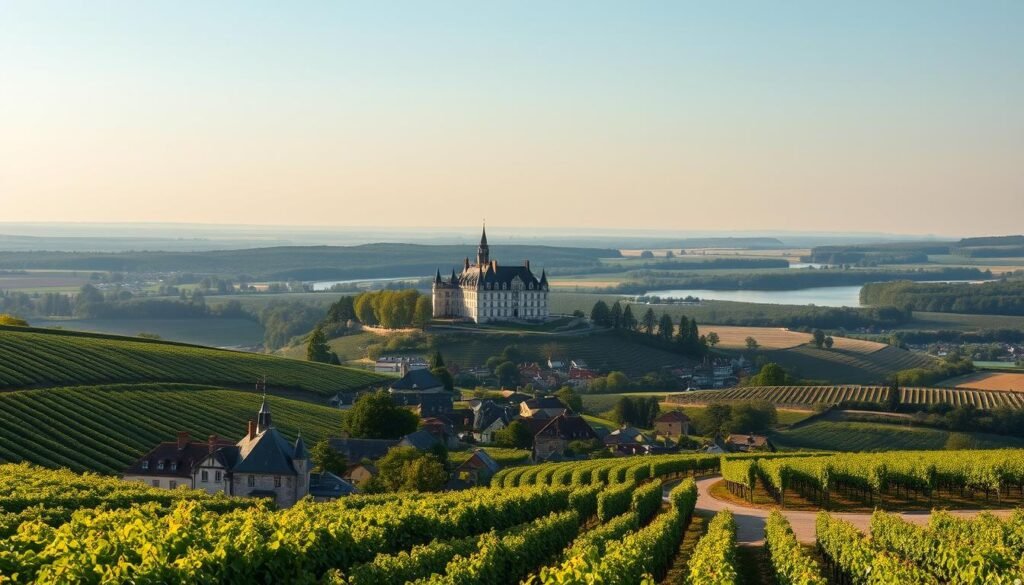
The Loire Valley rewards slow days with châteaux, riverside picnics, and easy cycling. I favor a three- to five-night stay, anchoring near Azay-le-Rideau or Chinon for calm lanes, vineyards, and quick access to major castles.
Essential châteaux and a simple loop
Start early at Chambord to beat crowds. Chenonceau’s arches over the Cher are perfect for late light photos. Azay-le-Rideau sits like a mirror on its lake and makes a lovely afternoon stop.best-caribbean-islands-to-visit
Heritage, towns, and a surprise detour
Chinon carries a world heritage site feel with a compact historic center and cellar doors for tastings. Chartres Cathedral makes an excellent day trip for stained-glass and a quiet lunch in the old city.
“Pair winery tastings with cycling paths; it turns travel into slow discovery.”
Practical tips
- Buy timed tickets for the big châteaux and aim for early or late visits.
- Pack a picnic and use riverside lawns along the Cher or Loire for sunset meals.
- Fit a half-day at Rochemenier’s troglodyte museum for something delightfully unexpected.
| Focus | Why go | Tip |
|---|---|---|
| Château trio | Scale, arches, photography | Chambord early, Chenonceau midday, Azay late light |
| Chinon / Chartres | Historic center + stained glass | Base near Chinon; day trip to Chartres |
| Slow travel | Cycling and tasting | Use local bike paths and small wineries |
Dordogne Delight: Prehistory, Honey-Stone Towns, and Long Dinners

Dordogne unfolds like a slow film—cave art one day, market lunches the next. I map a one-week plan that covers cave interpretation, medieval streets, and long dinners that linger over duck confit and local wine.
Lascaux IV and Les Eyzies
I start at Lascaux IV for state-of-the-art cave art displays. Then I pair that with the National Museum of Prehistory in Les Eyzies for the wider history context.
Bases, markets, and morning light
I base myself in Montignac or Sarlat so I feel at home and cut drive time. Early mornings in Sarlat are golden; the market and bell-tower elevator make a perfect start before a long lunch on a shady square.
Bastides, vineyards, and scenic drives
One day I route to Monpazier and Eymet, then head to Bergerac for intimate tastings with small producers. I recommend booking cave visits in advance—some slots sell out—and keeping one relaxed day for a river picnic along the Dordogne or Vézère.best-time-to-visit-iceland
“Slow the pace here: delightful towns, great food, and landscape that rewards lingering.”
- One-week balance: caves, medieval towns, vineyards, long meals.
- Start at Lascaux IV, add Les Eyzies for context.
- Base in Montignac or Sarlat; chase morning light and markets.
Provence & the Luberon: Light, Lavender, and Hilltop Villages
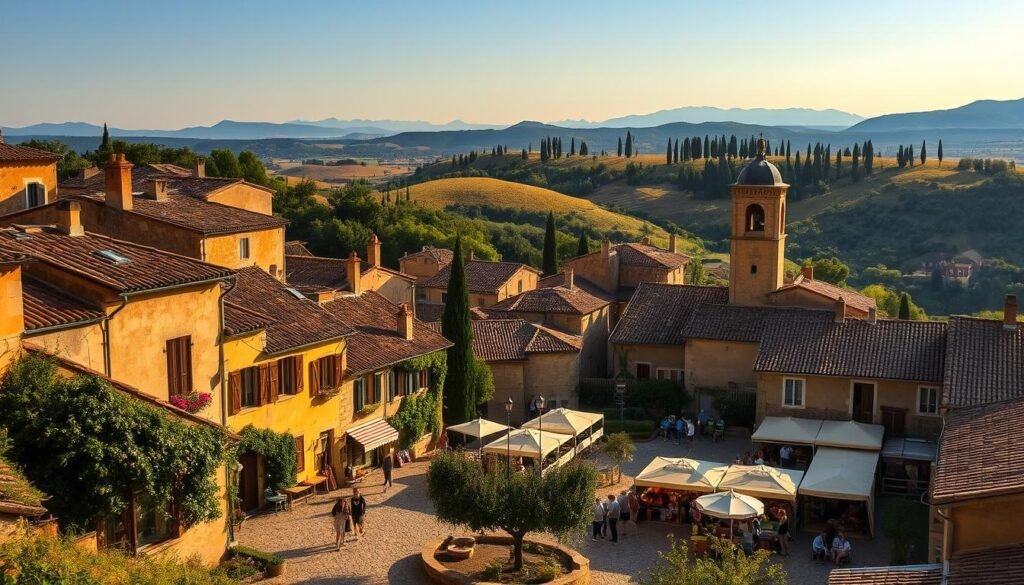
Sunlight in the Luberon turns stone and lavender into a gentle, cinematic palette that I never tire of. I plan stays that mix slow village mornings with short drives for dramatic views and winery stops.
Roussillon, Gordes, and Bonnieux
Walk Roussillon’s ocher cliffs and the small museum at Ôkhra for color and context. Gordes gives that postcard overlook; Bonnieux is perfect for a hilltop lunch and a glass of local wine.
Avignon, Arles, and nearby Roman gems
I use Avignon as a base for the Pope’s Palace and river walks. Arles rewards art lovers with Van Gogh sites and ancient architecture like the amphitheater.
Gorges du Verdon, Saint-Rémy, and Aix-en-Provence
Reserve a full driving day for the Gorges du Verdon; time viewpoints for midday light and picnic by the turquoise water. Add Saint-Rémy for Glanum and Saint-Paul de Mausole, and extend a trip to Aix for Hôtel de Caumont or Château La Coste art trails.best-time-to-visit-costa-rica
- Lavender windows: plan for late June–July for full bloom; light shifts through the day for better photos.
- Book restaurant reservations in popular towns and pop into village markets early for fresh finds.
- Look for easy vineyard tastings between stops for a relaxed afternoon pause.
| Focus | Why go | Timing |
|---|---|---|
| Luberon villages | Colorful lanes, hilltop views, local markets | 1–3 days |
| Avignon & Arles | Papal history, Roman sites, art heritage | 1–2 days each |
| Gorges du Verdon | Scenic drives, turquoise water, lookout points | Full day |
French Riviera (Côte d’Azur): Glamour, Sea Breezes, and Art-Filled Day Trips
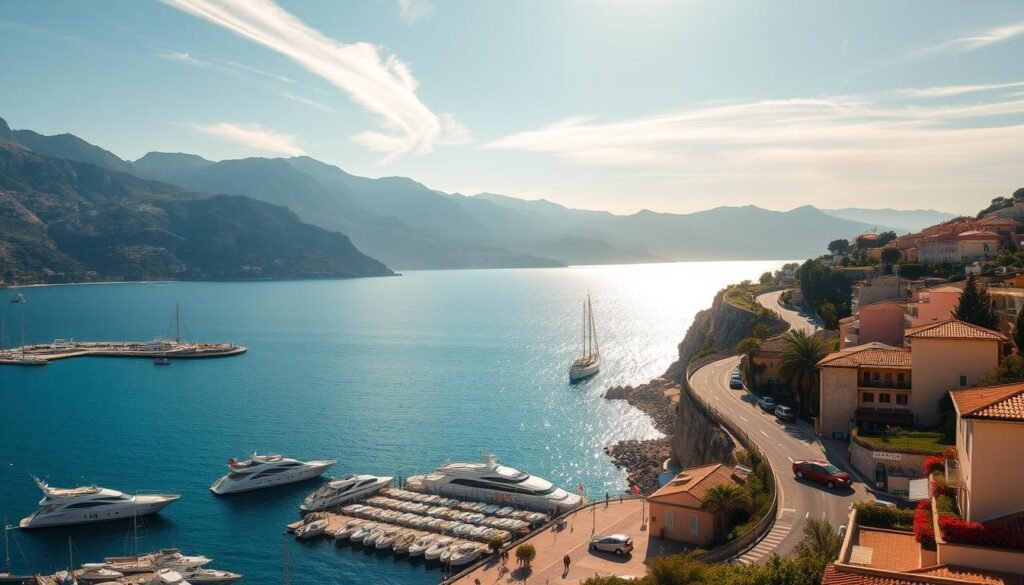
The Riviera mixes seaside calm with striking modern art and cliffside villages that reward slow travel.
I often choose a single base and let trains or a short drive handle the rest. Cannes suits travelers who want a lively promenade and easy rail links. Nice fits those who like museums and a big-city feel with beach access. Menton appeals when I crave quieter promenades and citrus-scented lanes.
Three-day sample loop
Day trips are effortless by coastal rail. I spend a morning in Èze for cliff views, an afternoon in Villefranche-sur-Mer for harbor cafés, and a slow day in Menton to wander lemon gardens.
Art and village pairings
Art stops include Fondation Maeght near Saint-Paul-de-Vence, the Matisse Museum in Nice, and Fondation Léger in Biot. I pair museum time with a stroll in a hill village and a late-afternoon aperitif by the water.
- Balance museums with a beach afternoon or a short coastal boat ride.
- Rent a car for morning hill villages, but use trains for coastal hops to avoid parking stress.
- Park outside tiny hill towns and walk in; streets are narrow and parking is limited.
| Base city | Who it suits | Transit tip |
|---|---|---|
| Cannes | Promenade life, rail hub for Monaco and Nice | Good train links; parking can be scarce in summer |
| Nice | Museum-goers, city beaches, nightlife | Central trains and trams; walkable neighborhoods |
| Menton | Quiet promenades, citrus markets | Smaller station; ideal for relaxed stays |
| Day loop | Èze, Villefranche, Menton | Short train rides or scenic coastal drives |
Alsace Region Charm: Half-Timbered Towns, Wine, and Winter Magic
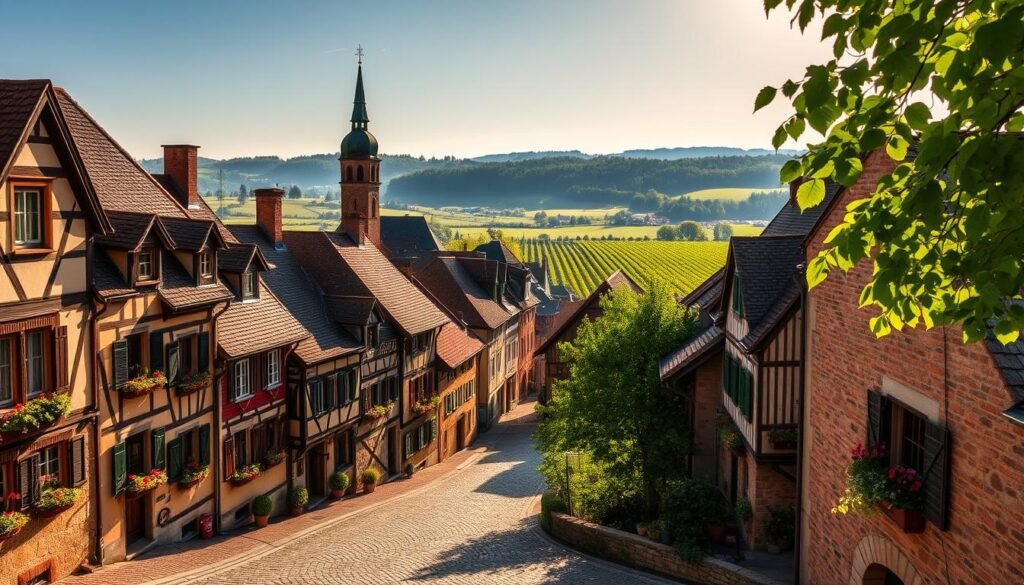
Alsace feels like stepping into a storybook because half-timbered lanes curve around canals and market squares. I split my time between Strasbourg’s vibrant city life and Colmar’s quieter canal-side calm for the ideal balance.
Strasbourg shines at Christmas with twinkling markets and the UNESCO world heritage historic center. I wander Petite France for canals, bridges, and lively café windows. Early morning light flatters the gingerbread façades and stone bridges—perfect for photos.
Colmar and a short plan
Colmar’s “Little Venice” canals beg for a slow boat ride and backstreet photography. I recommend a two- to three-day plan: one day for Strasbourg’s cathedral and Petite France, one for Colmar, and an extra day for vineyards along the Route des Vins.
Local tastes matter here. I warm up in cozy winstubs over tarte flambée and a glass of local wine. In winter, pack warm layers and sturdy shoes; book centrally so you can market-hop on foot.
“Split your stay between the grand energy of the city and the gentle calm of canal towns—it makes Alsace feel both lively and intimate.”
- Architecture notes: half-timbered houses, storks on rooftops, ornate shutters.
- Photography tip: aim for dawn or late afternoon for soft light on façades.
- Optional: add a winery stop and small villages like Riquewihr if you have an extra day.
Lyon: France’s Gastronomic Capital with Roman Roots
I find Lyon irresistible because food and history live on the same streets. The old town folds from Renaissance alleys into Roman terraces on Fourvière, and local cafés invite slow, deliberate meals.
My usual two- to three-day post here looks like long lunches at traditional bouchons and a market morning at Les Halles de Lyon Paul Bocuse. Evenings mean river walks across the Rhône and Saône or a bike ride along the quays.
“Lyon is a city where eating well feels like daily ritual.”
- Walk Vieux Lyon’s traboules, then climb to Fourvière for panoramic Roman ruins and skyline views.
- Try quenelles de brochet and praline tarts; read menus for local terms and portion cues.
- Cycle friendly routes along the rivers; neighborhood markets cluster near café-lined streets.
| Focus | Why go | Tip |
|---|---|---|
| Gastronomy | World-class bouchons and markets | Reserve lunches and taste small plates |
| Heritage | Roman amphitheaters and Renaissance lanes | Mix a museum morning with a stroll |
| Transit | Midway region on longer routes | Use Lyon as a stop between north and south |
Burgundy and Beaune: Grand Crus, Hospices, and Vine-Lined Roads
Beaune feels like a living postcard: honey-stone houses, a lively market, and the Hôtel-Dieu museum that anchors the old town. I use Beaune as a great base for two to three nights and walk its quiet lanes at dawn.
Beaune’s Hospices and a classic dinner
I spend a morning at the Hospices (Hôtel‑Dieu) and time my visit around the November wine auction if I can. Evenings mean a slow meal—boeuf bourguignon paired with local wine and a chat with the sommelier.
Scenic routes and nearby stops
The Route des Grands Crus threads neat vineyards and storybook villages. I stop in Pommard, Meursault, and Gevrey‑Chambertin for short tastings and cellar tours.
I add half-day detours to Château de Cormatin or small villages for quieter exploration. Book tastings by appointment, ask about shipping rules, and pick hotels with onsite parking during peak market days.
| Focus | Why go | Practical tip |
|---|---|---|
| Beaune | Hospices museum, markets | 2–3 nights; reserve hotel with parking |
| Route des Grands Crus | Vineyard views, cellar visits | Book tastings; plan short drives between towns |
| Châteaux detour | Restored gardens and calm lanes | Half-day trips; arrive mid-morning for photos |
Bordeaux: Wine Heritage, Riverside Strolls, and Easy Vineyard Hops
Use Bordeaux as a stylish hub for city sights and quick winery hops. I like a two- to three-night stay that balances grand architecture with relaxed riverwalks.best-time-to-visit-yellowstone
How I use Bordeaux as a base: mornings at the covered markets for oysters and white wine, afternoons at the Cité du Vin for context, and golden-hour strolls along the Garonne.
I plan one half-day for a Left Bank vs. Right Bank tasting split. Book visits in advance for appellations like Médoc, Saint-Émilion, and Pessac-Léognan—many domaines limit guests.
- Saint-Émilion: wander limestone lanes and the monolithic church after a tasting.
- Pick a small-group tour for guided vineyard hops or rent a car for flexible day trips.
- Use trams and short walks for city time and save driving for afternoon winery runs.
| Option | When to use | Why I pick it |
|---|---|---|
| Tram | City days | Easy, reliable, and parking-free |
| Small-group tour | Single-day tastings | Local guide and prebooked visits |
| Rental car | Flexible vineyard hops | Freedom to reach remote appellations |
“Bordeaux feels like an elegant city base that opens a world of vineyards a short drive away.”
This post highlights how Bordeaux blends urban charm with nearby wine country—ideal for short trips that pack a lot into a relaxed schedule.
Annecy and Alpine Getaways: Lake Life, Cobbled Streets, and Mountain Air
Annecy feels like a lakeside film set where canals, cafés, and mountains meet. I spend two calm days here—morning markets, a paddle-boat hour on the lake, and a sunset that softens the facades.
I map a relaxed day that links lakefront paths with café breaks and slow windows shopping. For clearer views, I aim for early mornings or late afternoons when light flatters the bridges and the crowds thin.
Bring a car for a loop that pairs Annecy with short Alpine detours. Drive toward high vantage points for panoramic pullouts, then return to cobbled lanes for a late lunch. This area rewards short hops and flexible pacing.
When I want to splurge, I book a countryside château stay nearby. Quiet mornings, starry nights, and a roomy breakfast make the whole escape feel longer than the actual time.
“Plan your photo hours for dawn or dusk and dodge midday canal crowds for calmer shots.”
- Base in the old town for easy access to markets and boats.
- Use one scenic drive for panoramic stops and a picnic.
- Balance alpine air with slow lakeside moments for the perfect mini-break.
Reims and the Champagne Route: Royal Cathedrals and Cellars to Savor
I begin my Champagne loop in Reims, where Gothic light and coronation history set a sober, beautiful tone before tastings and vineyard lanes.
Reims Cathedral is a moving stop—its stained glass and sculpted façade recall centuries of French crowns and ceremony. After a short cathedral visit, I book a late-morning tour at one of the famous Champagne houses for cellar passages and guided tastings.
Plan a one- to two-day loop that pairs Reims and Épernay. I explain appointment etiquette at cellars, how to pack bottles for transit, and the safe-ride options if you collect bubbly.
I recommend a late-afternoon vineyard drive to see the gentle rows that shape the region’s character and a quirky detour to Circuit Reims-Gueux if you enjoy vintage motor history. For evenings, a city-center dinner and a second-day contrast—one large house, one small grower—rounded my visits.
A classic day-trip guide pairs well with multi-region plans linking Burgundy or Alsace for an eastern France itinerary.
| Focus | Why go | Tip |
|---|---|---|
| Reims Cathedral | World heritage site; coronation history | Morning visit; photo the stained glass at mid-morning |
| Champagne houses | Cellar tours and tastings | Book appointments; ask about shipping |
| Vineyard loop | Landscape that defines the wine region | Late afternoon light; drive slowly |
“Pair a grand house with a tiny grower—each tells a different story of the same sparkle.”
Rouen, Bayeux, and Étretat: A Culture-Rich Triangle in Normandy
I find a compact loop here ideal for a two- to three-day mini-route that blends cathedral light, stitched stories, and cliff-top air.
Rouen is a rewarding city stop for anyone who loves Gothic drama and timbered lanes. The cathedral holds moving art and links to Richard the Lionheart, while Joan of Arc’s history colors several memorials. For dinner, I head to Rue Eau de Robec for cozy restaurants and calm evening walks.
Bayeux centers on the tapestry museum—an elegant, well-paced display that I pair with a relaxed town lunch. Then I drive toward the coast for Étretat’s chalk cliffs, which inspired Impressionist painters and offer sweeping cliff-top paths and photo light.best-time-to-visit-ireland
- Day 1: Rouen — cathedral, medieval streets, riverside dining.
- Day 2: Bayeux — tapestry museum and town lunch; base here or in Honfleur.
- Day 3: Étretat — cliff walks and coastal views; optional Giverny add-on en route to Paris.
| Day | Highlight | Tip |
|---|---|---|
| 1 | Rouen cathedral & architecture | Park near the old town; walk for photos |
| 2 | Bayeux Tapestry Museum | Buy timed entry; stroll the market |
| 3 | Étretat cliffs | Arrive for late afternoon light; bring sturdy shoes |
Routing and parking: I recommend an early start, parking on town edges, and short walks in historic centers to avoid tight streets. If you’re moving toward Paris, add Giverny for Monet’s ponds—it’s an excellent transitional stop.
“This triangle mixes powerful history with dramatic coastal scenery — compact, varied, and easy to pace.”
Best Places to Visit in France: My Ultimate Shortlist
My shortlist centers on three cities I return to, a set of regions for deeper exploration, and a cluster of coastal and village gems that slow the pace. Below I break these into quick categories so you can mix them into a 10– to 14‑day route or split them across two seasonal trips.
Cities I return to
- Paris — art, cafés, and endless neighborhoods for museum mornings and late walks.
- Lyon — a food-forward city with markets, bouchons, and Roman‑era viewpoints.
- Bordeaux — riverfront charm and easy vineyard hops for afternoon tastings.
Regions worth a deeper dive
- Normandy — history, Mont Saint‑Michel timing at late afternoon is ideal for light and crowds.
- Brittany — rugged coastlines and tidal drama for coastal walks.
- Loire Valley — châteaux, cycling lanes, and slow riverside lunches.
- Dordogne — cave art, medieval towns, and long market meals.
- Provence — lavender windows, hilltop villages, and vivid light.
- Alsace — half‑timbered lanes and wine roads that feel like a storybook.
Coastal and village favorites
- French Riviera — art museums, seaside promenades, and hilltop villages for short day loops.
- Annecy — lakeside calm and cobbled streets for a relaxed two‑day stay.
- Villefranche‑sur‑Mer — a quiet harbor with easy access from coastal trains.
- Colmar — fairy‑tale façades and canals that photograph beautifully at dawn.
“Mix a city hub with one or two regions and a coastal stop for balanced travel that feels both rich and restful.”
| Trip length | Suggested mix | Why it works |
|---|---|---|
| 10 days | Paris + Loire Valley + Normandy | City art, châteaux, and a timed Mont Saint‑Michel evening |
| 12–14 days | Lyon + Provence + French Riviera | Food, hilltop villages, then coastal art and beaches |
| Split seasonals | Bordeaux & Dordogne (spring) / Alsace & Brittany (autumn) | Wine and markets in spring; colors and cozy towns in cooler months |
How I Plan My France Trips: Great Bases, Car vs. Train, and Timing
My trips start with a clear base town and a loose day-by-day plan that leaves room for surprises. I pick a base that cuts daily transit and makes mornings easy.
When I rent a car vs. ride the rails
I choose a car when sights are scattered across rural lanes—think Brittany, Dordogne, or Loire vineyards. Driving gives flexibility for market mornings, photo stops, and late dinners.
When cities link well by train, I travel rails and add short local rentals or guided tours for countryside highlights. Eurostar to Lille is a convenient rail entry if you prefer skipping flights.
My favorite base towns and timing tactics
I use small towns as operational hubs: Beaune for Burgundy, Chinon or Azay for the Loire, Bayeux or Honfleur for Normandy. A smart base saves time and makes each morning smoother.
- Start early for popular sites and stack short outings with long lunches.
- Save museum-heavy days for rainy weather.
- Consider rail-plus-driver or a rail-plus-tour hybrid if you avoid driving.
| Practical tip | Why it helps | Note |
|---|---|---|
| Crit’Air vignette | Required in some low-emission zones | Buy online before you drive into larger cities |
| Hotel with secure parking | Saves time and stress | Book in Rouen, Beaune, and other hubs |
| Fuel & toll planning | Keeps budgets realistic | Map fuel stops and estimate tolls before departure |
“Translate a wishlist into a realistic plan by pairing one base with two short loops and one flexible free day.”
Conclusion
Treat this list as a flexible sketch you can return to year after year. Use it to plan one full route now and another the next year, letting the country reveal new corners at a relaxed pace.
I recommend mixing cities and villages, pairing UNESCO world heritage sites like Strasbourg and the Loire Valley with lazy afternoons among vineyards and château gardens. A few well-chosen bases — Paris, Beaune, Bordeaux, plus a Riviera or Alsace base — unlock nearby regions and cut transit time.
Time matters: arrive early or late at busy sites, favor shoulder seasons for softer light and quieter streets, and keep space for surprises. Book the houses or tours that excite you now, and leave room for the unexpected — the place you love most may be the one you stumble upon.






